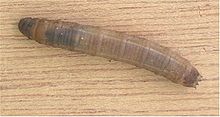Lawn Grub Problems and Controls
Grubs of the daddy long legs or species of Tipula attract birds to peck at your lawn. More importantly nthe feast on the roots of your turf.

Grub Problems on Lawns
- Leatherjackets are larvae or grubs of the Crane Fly or Daddy Long Legs as they are more commonly known.
- Leatherjackets live for one year from eggs laid in September, eating there way through winter
- The fully grown Larvae are grey brown maggots up to 4 cm in length and have grown that size by eating the roots of your grass.
- Leatherjacket problems can be recognised when your lawn starts thinning and going bare.
- During dry spells in summer the grass may go yellow-brown caused by the grubby eating habits.
- The less common larvae of Chafer Beetles live for 3 years in the soil but the effect can be the same as Daddy Long Legs grubs. They are creamy white, C-shaped with brown heads and look similar to vine weevil.
Prevention And Control
- Chemical insecticides have been banned by EEC for garden use against these grubs.
- On a wet day cover the lawn overnight with some black plastic . When you remove it the next morning the grubs will be on the surface to feed the birds.
- Nematode products utilise natural predators such as nematodes, lady-bird and lace-wing larvae that break the life-cycle of the pest. These solutions boost the number of natural predators and have no detrimental effect upon the lawn.
